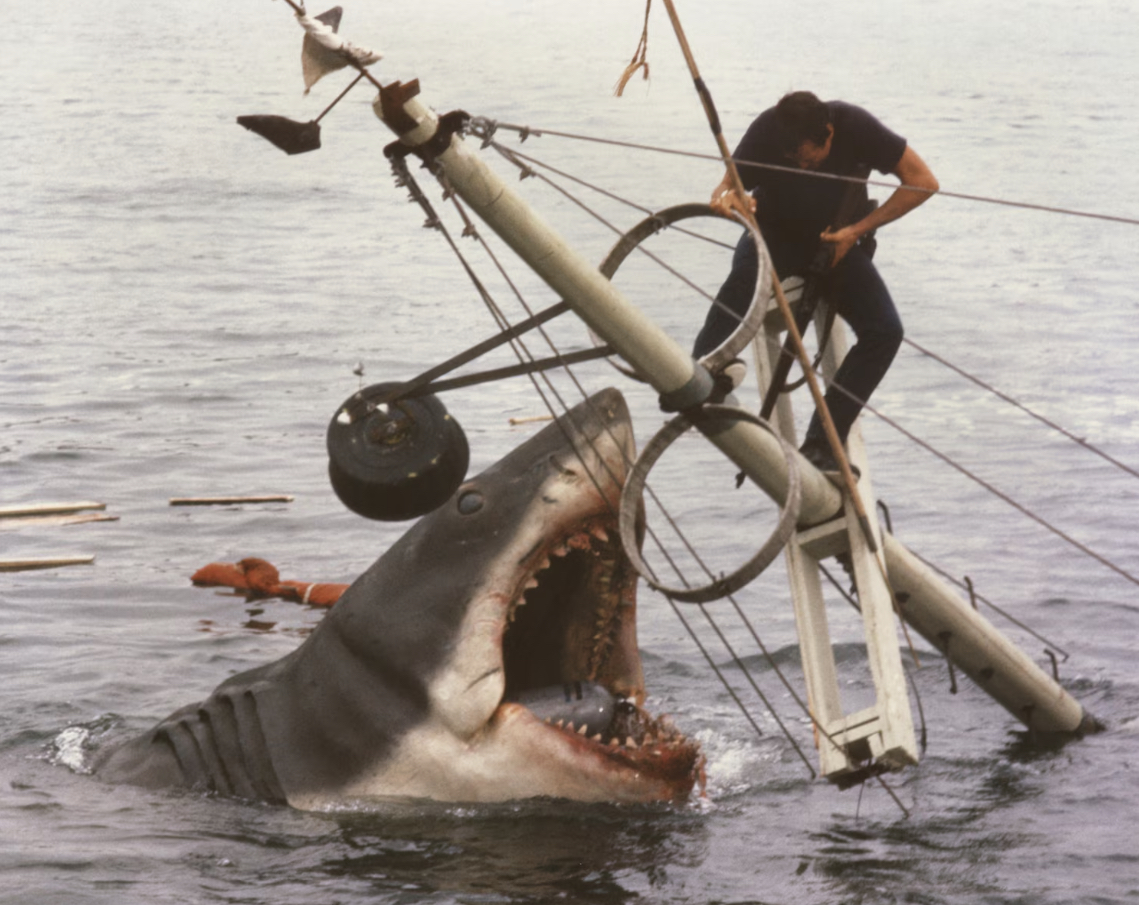50th anniversary of ‘Jaws’: How the film impacted public perception of sharks

The film “Jaws,” directed by Steven Spielberg, celebrates its 50th anniversary this year, marking half a century since it first hit theaters in 1975. This cinematic masterpiece not only revolutionized the film industry but also profoundly impacted public perception of sharks, etching a legacy that continues to influence both ocean conservation efforts and the portrayal of marine life today.
Released on June 20, 1975, “Jaws” became a cultural phenomenon, widely regarded as the first summer blockbuster. The film’s gripping narrative, centered around a great white shark terrorizing the small beach town of Amity Island, captured audiences worldwide. With its iconic suspenseful music composed by John Williams and thrilling sequences that kept moviegoers on the edge of their seats, “Jaws” instilled a primal fear of the ocean and its enigmatic predators.
One of the most significant impacts of “Jaws” was the shift in public perception of sharks. Before the film’s release, sharks were generally regarded as mysterious and awe-inspiring creatures of the deep. However, “Jaws” transformed sharks into symbols of fear and danger, painting them as mindless man-eaters. This portrayal, while fictional, led to widespread fear and misunderstanding of these remarkable animals.
The fear generated by “Jaws” had real-world consequences for shark populations. In the years following the film’s release, there was an increase in shark hunting and culling efforts, driven by the public’s newfound anxiety. Many coastal communities took measures to protect swimmers, often resorting to harmful practices that further threatened shark populations. As a result, several shark species faced declining numbers, exacerbating the challenges they already faced from overfishing and habitat destruction.
While “Jaws” undeniably contributed to negative stereotypes about sharks, it also served as a catalyst for the shark conservation movement. As awareness of the ecological importance of sharks grew, scientists and conservationists began to push back against the demonization perpetuated by the film. They emphasized the critical role sharks play in maintaining healthy ocean ecosystems as apex predators, regulating the populations of other marine species and ensuring balanced marine environments.
Over the decades, efforts to change the narrative surrounding sharks have gained momentum. Educational campaigns, documentaries, and shark conservation organizations have worked tirelessly to reframe sharks as vital components of the marine ecosystem rather than fearsome predators. The rise of Shark Week, an annual television event dedicated to educating the public about sharks, has further contributed to shifting perceptions. These efforts aim to foster a more accurate and informed understanding of sharks, promoting coexistence rather than fear.
As we celebrate the 50th anniversary of “Jaws,” it’s essential to reflect on the dual legacy it leaves behind. While the film remains a cinematic classic that continues to entertain and thrill audiences, it’s crucial to recognize the need for a more nuanced and informed perspective on sharks. By acknowledging the impact “Jaws” had on public perception, we can work towards greater conservation efforts and appreciation for these magnificent creatures.
In conclusion, the anniversary of “Jaws” serves as a reminder of the power of media to shape public perceptions and the responsibility that comes with it. As we look to the future, let us embrace a narrative that respects and protects the natural world, ensuring that sharks and other marine life thrive in harmony with humans.
RELATED NEWS...
 Top Video Viral
Top Video Viral


